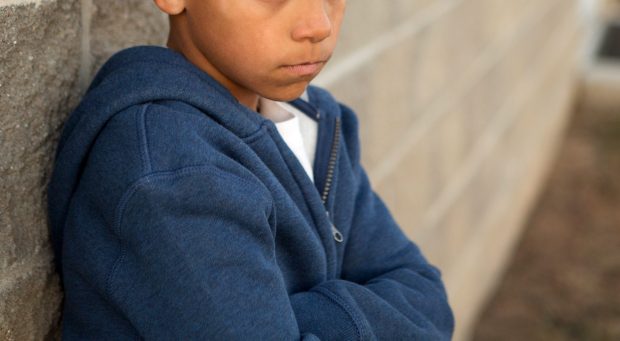While New York City public schools are issuing fewer suspensions overall, sharp disparities by race and disability status remain, according to new data.
Schools handed down 27,143 suspensions last school year, the system’s most recent report showed — a 2.1% decrease from the year before. The figure kept with a trend of steady declines since an uptick during the 2022-23 school year, as kids readjusted to the classroom after the COVID-19 pandemic.
But the drop was uneven, particularly for Black and special-education students, who continue to be barred from attending class, sometimes for weeks, at higher rates.
“We cannot ignore that this decline was not felt equally across the system,” said Maria Odom, executive director of Advocates for Children of New York, which weighed in on the data Tuesday.
Over the last decade, the city’s school system has moved away from lengthy suspensions in favor of progressive discipline that focuses on conflict resolution and the root causes of student misbehavior.
As suspensions decreased overall last year, so did what are known as “superintendent’s suspensions,” which can keep students out of class for more than a week. The long-term suspensions, which are reserved for more serious infractions and subject to disciplinary hearings, plummeted by 10% last school year, according to the report.
However, the racial and disability status imbalances were particularly acute for superintendent’s suspensions, Advocates for Children found. Black students, who make up a fifth of all students, received 47% of the lengthy punishments — an increase of 2.4 percentage points from the year before.
 The drop in suspensions was uneven, particularly for Black and special-education students, who continue to be barred from attending class, sometimes for weeks, at higher rates. (Shutterstock)
The drop in suspensions was uneven, particularly for Black and special-education students, who continue to be barred from attending class, sometimes for weeks, at higher rates. (Shutterstock)
Students with disabilities, who account for less than a quarter of enrollment, got 46.7% of the higher-level suspensions, up 3.5 points. Earlier this year, a Chalkbeat New York investigation found that schools are suspending students for weeks without properly considering their disability.
Total suspensions were also up for students who were homeless or in foster care, who were suspended at four times the rate of their classmates, according to Advocates for Children’s analysis.
In a statement, a representative for the public schools said education officials “know this work must be ongoing.”
“We are continuously working toward encouraging schools to address any issues in a positive, supportive and less punitive manner where possible,” spokeswoman Jenna Lyle said.
But as the progressive practices have grown more widespread, so has the backlash.
Critics say the reforms have failed to hold students accountable and led to disorderly classrooms. Under Mayor Adams, the school system planned to retrain all principals on applying the discipline code, in response to administrators who reported feeling discouraged from taking action against serious misconduct.
Advocates insist the policies help young people address the harm they caused and provide an opportunity for authentic repair and change. They hope the Mamdani administration will fund restorative justice programming and mental health services.
“We’re hoping that the next administration will [understand] punitive discipline is, for the most part, harmful to young people, and does not actually address the root causes of behavior,” said Rohini Singh, director of the school justice project at Advocates for Children.
“Accountability is part of restorative justice,” she added, “helping students understand the harm that their behavior can cause — which can lead them to change their behavior.”
